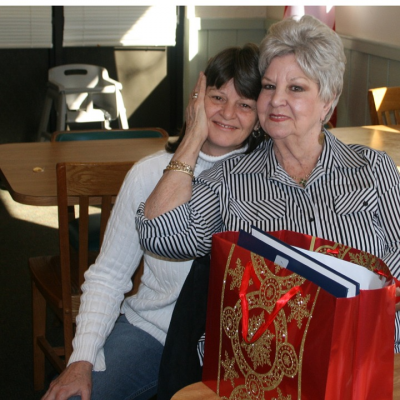Our friend Karen from Elder Wellness has kindly shared another blog with us and although it is aimed at an American audience, we thought people in the UK could still take something from this article…
When one of your parents passes, the survivor often faces big challenges. Sometimes, bringing your mom or dad into your home is the most logical solution, and that also sometimes means upsizing. Here are some tips for finding a home that will meet your parent’s needs now and in the future.
Meeting aging needs
As we grow older, our minds and bodies lose many of the capabilities enjoyed during younger years. With that in mind, you should search for a property that will help your parent age independently, even if there currently is no loss of physical or mental ability. Be alert to potential accessibility issues when searching for the perfect property. Think about other quality of life concerns as well. For instance, you also may wish to find a property located close to public transportation to ease your care burden and promote your loved one’s independence. You can use a home accessibility checklist to help you in your search.
Easy entry
One important accommodation for your senior parent is an entryway without steps. For instance, a ramp can help your mom or dad come and go more easily, whether in a wheelchair or not. If a home has steep steps, one solution is to build a ramp that angles back and forth to create a gradual ascent. Most homeowners spend between $946 and $2,844 to build a disability ramp. You should also look for properties with wide doorways to accommodate a wheelchair or other assistive devices. For the most part, this requirement rules out older homes. Also, look for a porch or stoop at the entrance, which is at least 5 square feet. Think in terms of allowing enough space to manage opening the door with a walker or wheelchair.
Stairs and steps
For your parent, one-floor living is ideal. Look for a property that offers a bedroom, kitchen and bathroom on one level, preferably the ground floor. Stairs should not have carpeting, and slippery surfaces should be modified for traction. Stair rails should be sturdy, and you should consider a chair lift if your loved one already has mobility issues. Some experts recommend offering grab rails in any part of the home with uneven flooring.
Kitchen
Look for a minimum of 48 inches between cabinets, and the lowest shelves of wall-mounted cabinets should be no higher than 48 inches. Countertops of varied height are a boon, since it allows food prep from either a standing or seated position. Look for storage areas that are easily accessible, such as in the pantry. The kitchen floor should be a nonslip surface, even when wet; the AARP suggests cork, vinyl, linoleum or wood.
Bathroom
The bathroom your parent uses should be accessible. This should include a sink that a wheelchair could fit under when in use. The commode should have a seat at least 19 inches tall, and there should be grab bars for toileting and bathing. Look for a shower that is curb-free, and all the better if there is a built-in seat and hand-held shower head.
Non-physical supports
During this time of transition, your surviving parent is more vulnerable than ever. Forbes notes that during the period of adjustment, your mom or dad may need help learning tasks that were previously taken on by your other parent. For instance, you might need to assist with balancing the checkbook or arranging car repairs while your parent becomes accustomed to her or his new responsibilities. Thankfully, sharing a home together will make it more convenient to step in when your parent needs help – or just a listening ear.
Upsizing for your parent
Taking your parent into your home and under your wing can be a challenge. Finding a home to accommodate their needs is the key to providing independence and safety. With your senior loved one close, you’ll feel more at ease, and can provide your parent a better quality of life.

